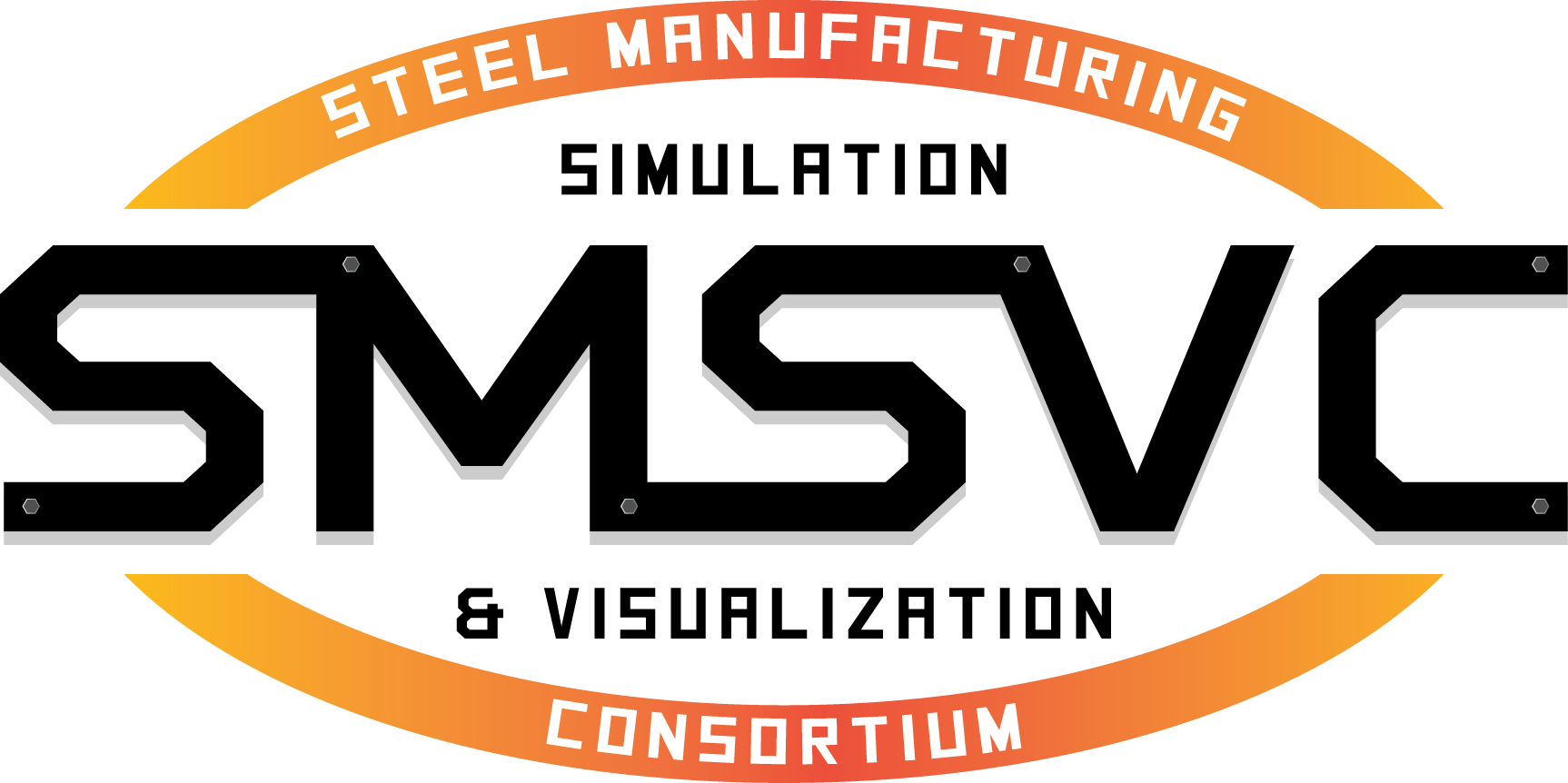CIVS staff, CIVS graduate research assistants, along with industry collaborators were highlighted in the July and August issues of Iron & Steel Technology. 3 technical papers were published in categories of Ladle Refining & Refractories, Safety & Environment, and Decarbonization Technologies (and Energy & Utilities and Environmental).
July 2024 Vol. 21, No. 7
“A CFD Study of Alloy Dissolution and Homogenization in Ladle Metallurgy Furnace”
The addition of microalloying elements in steel production is essential to improve steel properties, as they have a strengthening effect even in small amounts. The dissolution process of copper in the ladle metallurgy furnace was studied using parametric tests on the number of plugs and argon gas flowrates for stirring. To understand the particle movement in the molten bath, numerical simulations were performed using a three-dimensional computational fluid dynamics method. The results show that the mixing time is affected by the number of plugs and the gas flowrate, with the shortest mixing time achieved with a single-plug ladle with a flowrate of 0.85 m3/minute and a dual-plug ladle with a total flowrate of 1.13 m3/minute, both taking 5.6 minutes.
Authors:
Ogochukwu Q. Duruiheme, CIVS Graduate Research Assistant
Xipeng Guo, CIVS Graduate Research Assistant
Nicholas Walla, CIVS Senior Research Engineer
John Lowry, Nucor Steel
Chenn Zhou, CIVS Director
August 2024 Vol. 21, No.8
“Hazard Recognition Scenario Builder for On-Site Customizable Virtual Training”
Hazards are ever-present in the steel plant environment, and a heightened awareness and emphasis on safety is a necessary priority for our industry. This monthly column, coordinated by members of the AIST Safety & Health Technology Committee, focuses on procedures and practices to promote a safe working environment for everyone.
Authors:
Sai Laya Mallineni, CIVS Graduate Research Assistant
Kyle Toth, CIVS Senior Research Engineer
John (Jack) Moreland, CIVS Senior Research Scientist
Xibin Zhou, CIVS Graduate Research Assistant
Chenn Zhou, CIVS Director
Michael Schwentor, U.S. Steel
Garrett Page, Steel Dynamics, Inc.
“Decarbonization and Increased Productivity in the Reheating Furnace Using Hydrogen Fuel”
In the last decade, decarbonization of the steel industry has motivated comprehensive investigation on the use of hydrogen fuel in steelmaking. However, the increased heat output of hydrogen-fueled burners also creates opportunities for furnace throughput improvements. The primary factors that affect steel quality and productivity are the uniform distribution of heat, followed by slab residence time in the reheating furnace. Using computational fluid dynamics to model hydrogen utilization and comparing the results to traditional natural gas combustion, opportunities for increased furnace throughput were found due to the higher relative heat output of hydrogen as a fuel. One approach covered in this study is the use of regenerative burners in a reheating furnace using hydrogen as fuel. Apart from the decarbonization achieved while using hydrogen as fuel, the additional effect of using regenerative burners in such a furnace is studied with respect to thermal efficiency and productivity increase.
Authors:
Anurag Karambelkar, CIVS Graduate Research Assistant
Chukwunedum Uzor, CIVS Graduate Research Assistant
Nicholas Walla, CIVS Senior Research Engineer
Armin Silaen, CIVS Associate Research Professor
Lawrence Fabina, Cleveland-Cliffs
Kurt Johnson, Cleveland-Cliffs
Chenn Zhou, CIVS Director
Iron & Steel Technology is the premier technical journal for metallurgical, engineering, operating and maintenance personnel in the iron and steel industry. For more information, visit AIST.org.
The post Three Technical Papers Published in Iron & Steel Technology appeared first on Center for Innovation through Visualization and Simulation (CIVS).
